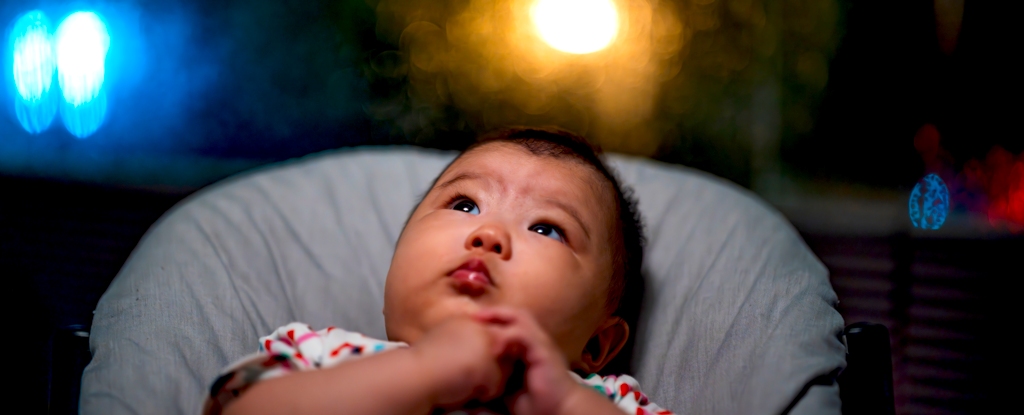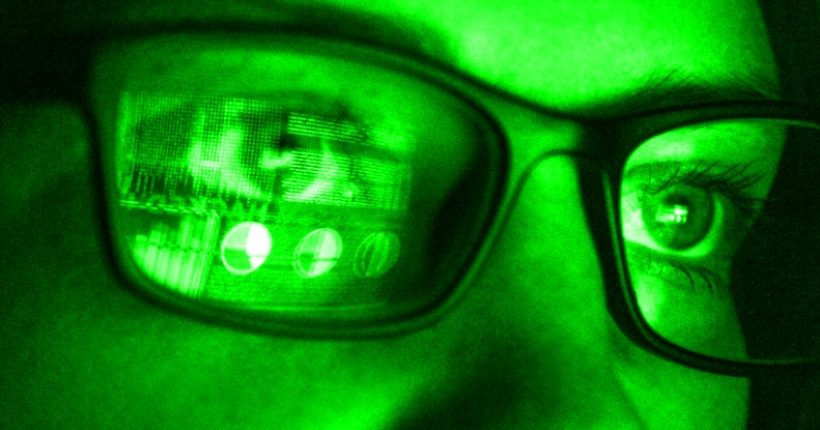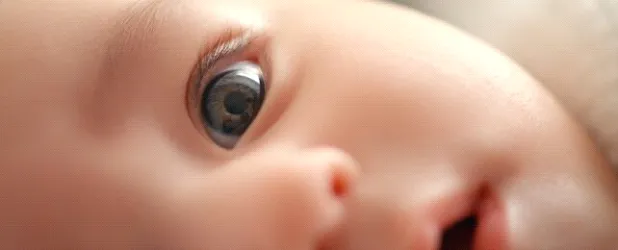اگر نوزادی در فضا متولد شود چه اتفاقی میافتد؟ یک دانشمند خطرات آن را توضیح میدهد
با سرعت گرفتن برنامههای سفر به مریخ، سؤالاتی درباره توانایی بدن انسان برای مقابله با شرایط فضا نیز افزایش مییابند. رفتوبرگشت به سیاره سرخ آنقدر طول میکشد که طی آن امکان بارداری و حتی زایمان وجود دارد.
پیوستن به کانال تلگرام
آکادمی: Asre_ZabanIR
اما آیا بارداری میتواند با موفقیت در فضا آغاز و ادامه پیدا کند؟ و اگر نوزادی دور از زمین به دنیا بیاید، چه خواهد شد؟
اکثر ما به ندرت به خطراتی که قبل از تولد از آنها جان سالم به در بردهایم فکر میکنیم. برای مثال، حدود دو سوم جنینهای انسانی پیش از تولد از بین میروند، که بیشتر این موارد در چند هفته اول پس از لقاح رخ میدهد؛ اغلب حتی قبل از آنکه فرد متوجه بارداری شود.
این از دست رفتنهای اولیه و نادیده گرفتهشده معمولاً زمانی رخ میدهند که جنین یا بهدرستی رشد نمیکند یا در دیواره رحم بهدرستی لانهگزینی نمیکند.
بارداری را میتوان به عنوان زنجیرهای از مراحل بیولوژیکی در نظر گرفت. هر مرحله باید به ترتیب مشخصی رخ دهد و هرکدام نیز شانس موفقیت خاص خود را دارند. در زمین، این احتمالات را میتوان با استفاده از پژوهشهای بالینی و مدلهای زیستی برآورد کرد. پژوهش جدید من بررسی میکند که این مراحل چگونه ممکن است تحت شرایط دشوار فضای بینسیارهای دچار اختلال شوند.
میکروگرانش (تقریباً بیوزنی که در هنگام پرواز فضایی تجربه میشود)، باعث میشود لقاح از نظر فیزیکی دشوارتر شود، اما احتمالاً تأثیر چندانی بر ادامه بارداری پس از لانهگزینی نخواهد داشت.
با این حال، زایمان و نگهداری از نوزاد در حالت بیوزنی بسیار دشوارتر خواهد بود. در فضا، هیچ چیز سر جای خود نمیماند؛ مایعات معلقاند، افراد نیز همینطور. این موضوع باعث میشود که فرآیند زایمان و مراقبت از نوزاد بسیار پرهرجومرجتر و پیچیدهتر از زمین باشد؛ جایی که گرانش در همه چیز – از موقعیتگیری تا شیر خوردن – نقش کمککننده دارد.
در عین حال، جنین در حال رشد از همان ابتدا در محیطی مشابه میکروگرانش قرار دارد. او درون مایع آمنیوتیک بهطور معلق و بیوزن شناور است. در واقع، فضانوردان برای تمرین راهپیمایی فضایی در مخازن آب تمرین میکنند تا شرایط بیوزنی را شبیهسازی کنند. از این نظر، رحم خود شبیهساز بیوزنی است.
اما گرانش فقط بخشی از ماجراست.
تابشهای کیهانی
در خارج از لایههای محافظتی زمین، تهدید خطرناکتری وجود دارد: پرتوهای کیهانی. اینها ذراتی با انرژی بسیار بالا هستند – هستههای اتمی برهنهای که با سرعتی نزدیک به نور در فضا حرکت میکنند. آنها اتمهایی هستند که تمام الکترونهای خود را از دست دادهاند و تنها هسته متراکم پروتون و نوترون آنها باقی مانده است. وقتی این هستهها با بدن انسان برخورد میکنند، میتوانند آسیبهای جدی به سلولها وارد کنند.
در زمین، ما با اتمسفر ضخیم و میدان مغناطیسی زمین از بیشتر تابشهای کیهانی محافظت میشویم. اما در فضا، این سپرهای محافظ وجود ندارند.
وقتی پرتو کیهانی از بدن عبور میکند، ممکن است با اتمی برخورد کند، الکترونهایش را جدا کرده و با هسته برخورد کند، پروتونها و نوترونها را خارج کند و عنصر یا ایزوتوپ دیگری ایجاد کند.
این برخوردها میتوانند باعث آسیبهای بسیار موضعی شوند – یعنی ممکن است فقط برخی از سلولها یا قسمتهایی از آنها از بین بروند، در حالی که باقی بدن دستنخورده باقی میماند. گاهی پرتو کیهانی از بدن بدون برخورد عبور میکند، اما اگر به DNA برخورد کند، میتواند باعث جهشهای ژنتیکی شود که خطر سرطان را افزایش میدهند.
حتی اگر سلولها زنده بمانند، تابش میتواند واکنشهای التهابی را در بدن فعال کند؛ یعنی سیستم ایمنی بیشواکنش نشان دهد و موادی آزاد کند که به بافتهای سالم آسیب میزنند و عملکرد اندامها را مختل میکنند.
در هفتههای اول بارداری، سلولهای جنینی به سرعت تقسیم میشوند، حرکت میکنند و بافتها و ساختارهای اولیه را شکل میدهند. برای ادامه رشد، جنین باید در این فرآیند ظریف زنده بماند. ماه اول پس از لقاح حساسترین زمان است.
برخورد یک پرتو کیهانی پرانرژی در این مرحله میتواند برای جنین کشنده باشد. البته جنین در این مرحله بسیار کوچک است – و پرتوهای کیهانی، با وجود خطرناک بودن، بهندرت برخورد میکنند. پس احتمال برخورد مستقیم کم است. اگر هم اتفاق بیفتد، احتمالاً منجر به سقط جنین پنهان و نادیده گرفتهشده خواهد شد.
خطرات بارداری در ادامه مسیر
با پیشرفت بارداری، نوع خطر تغییر میکند. وقتی که جریان خون جفت – یعنی سیستم ارتباطی خونی بین مادر و جنین – در پایان سهماهه اول کامل میشود، رحم و جنین با سرعت زیادی رشد میکنند.
این رشد، هدف بزرگتری برای پرتوهای کیهانی فراهم میکند. حالا احتمال بیشتری وجود دارد که پرتو به عضله رحم برخورد کند و باعث انقباضاتی شود که میتوانند منجر به زایمان زودرس شوند. و هرچند که مراقبتهای ویژه نوزادان نارس در زمین پیشرفت زیادی داشتهاند، هرچه نوزاد زودتر به دنیا بیاید، خطر عوارض بیشتر میشود – بهویژه در فضای بیوزن.
در زمین، بارداری و زایمان ذاتاً با خطر همراهاند. در فضا، این خطرات چندبرابر میشوند – ولی لزوماً غیرممکن نیستند.
پیوستن به کانال تلگرام
آکادمی: Asre_ZabanIR
رشد بعد از تولد
اما رشد نوزاد پس از تولد نیز ادامه دارد. نوزادی که در فضا به دنیا میآید در میکروگرانش رشد میکند، که میتواند بر رفلکسهای وضعیتی و هماهنگی بدن تأثیر بگذارد. اینها همان غرایزی هستند که به نوزاد کمک میکنند سرش را بالا بگیرد، بنشیند، بخزد و در نهایت راه برود – تمام این حرکات به حس “بالا” و “پایین” وابستهاند. بدون این حس، این تواناییها ممکن است به شکل متفاوتی رشد کنند.
و خطر تابش از بین نمیرود. مغز نوزاد بعد از تولد همچنان رشد میکند و قرار گرفتن طولانیمدت در معرض پرتوهای کیهانی میتواند آسیب دائمی وارد کند – که ممکن است بر حافظه، شناخت، رفتار و سلامت بلندمدت اثر بگذارد.
پیوستن به کانال تلگرام
آکادمی: Asre_ZabanIR
پس آیا ممکن است نوزادی در فضا به دنیا بیاید؟
از نظر تئوری، بله. اما تا زمانی که نتوانیم جنین را از تابش محافظت کنیم، زایمان زودرس را پیشگیری کنیم، و اطمینان حاصل کنیم که نوزادان در بیوزنی بهسلامت رشد میکنند، بارداری فضایی یک آزمایش پرخطر باقی خواهد ماند – آزمایشی که هنوز برای انجام آن آمادگی نداریم.
📝 منبع:
آرون ویویان هولدن، استاد ممتاز زیستشناسی محاسباتی، دانشگاه لیدز
این مقاله با مجوز کریتیو کامنز از وبسایت The Conversation بازنشر شده است.
#آکادمی_عسرزبان www.Asre-Zaban.ir
What If a Baby Were Born in Space? A Scientist Unpacks
the Risks
As humanity moves closer to launching missions to Mars, new
questions arise about how our bodies would endure such journeys. A round trip
to the red planet could last long enough for someone to become pregnant—and
even deliver a baby.
But is it truly possible for conception and a healthy
pregnancy to occur in space? And if a baby were born beyond Earth, what
challenges would it face?
Most people seldom think about how many dangers they
survived before birth. In fact, nearly two-thirds of human embryos never make
it to birth, with the majority lost in the first few weeks after
fertilization—often before the pregnancy is even detected.
These early losses typically happen when an embryo fails to
develop correctly or doesn’t implant properly in the uterine wall.
Pregnancy can be seen as a complex sequence of biological
steps. Each stage must occur in the right order and carries a certain
probability of success. On Earth, scientists can estimate those chances based
on clinical data and biological models. My research focuses on how the harsh
conditions of space might impact those same stages.
Microgravity—the near-weightlessness experienced during
spaceflight—would likely make conception more physically difficult. Still, once
the embryo implants in the uterus, microgravity might not significantly hinder
the continuation of pregnancy.
However, childbirth and newborn care would be far more
challenging in a zero-gravity environment. In space, nothing stays put: people
and fluids float freely. Without gravity to assist with positioning and basic
care, delivering and nurturing a baby becomes much more complicated and messy
compared to Earth.
Interestingly, the womb already offers a microgravity-like
environment. The fetus floats in amniotic fluid, weightless and cushioned. In
fact, astronauts train in water tanks that simulate weightlessness—just like
the conditions inside the womb. So in that sense, the fetus is already “in
space” during development.
But gravity isn’t the only concern.
The Radiation Threat
Outside Earth’s protective atmosphere and magnetic field
lies a more serious danger: cosmic radiation. This consists of high-energy
particles—essentially stripped-down atomic nuclei—that race through space at
near light speed. These nuclei, having lost all their electrons, consist of
tightly packed protons and neutrons. When they collide with the human body, the
results can be damaging at the cellular level.
Earth shields us from most of this radiation through its
thick atmosphere and magnetic field. In space, however, this protection
vanishes.
If a cosmic ray penetrates the body, it may strike an atom,
strip away electrons, and collide with the nucleus—knocking out particles and
creating entirely new elements or isotopes.
Such collisions cause localized damage—affecting individual
cells while leaving surrounding tissue untouched. Sometimes the ray passes
through without hitting anything. But if it hits DNA, it can lead to mutations
that increase the risk of cancer.
Even if the cell survives the impact, the radiation can
trigger an overactive immune response—causing inflammation and tissue damage
that disrupts normal organ function.
In the early stages of pregnancy, the embryo’s cells divide
rapidly and form essential structures. This is the most fragile phase of
development. A single hit from a high-energy cosmic ray during this time could
be fatal to the embryo.
Fortunately, embryos are tiny at this stage, and direct hits
are statistically rare. If one did occur, it would likely result in an
unnoticed miscarriage.
How Pregnancy Risks Evolve
As pregnancy advances, the potential hazards change. By the
end of the first trimester, the placenta is fully formed and the fetus, along
with the uterus, starts to grow quickly.
This growth makes the womb a bigger target. Cosmic rays are
now more likely to hit the uterine muscle, which might induce contractions and
possibly lead to premature labor. Although neonatal care on Earth has made
great strides, in space, early birth would still be extremely risky.
Even on Earth, childbirth carries inherent risks. In space,
those risks increase dramatically—but they aren’t necessarily insurmountable.
Growing Up in Space
Birth isn’t the end of development. A baby born in space
would continue to grow in a microgravity environment, which could affect its
physical and neurological development. Basic motor reflexes—like lifting the
head, sitting up, or crawling—rely on gravity. Without a clear sense of
“up” or “down,” these skills might develop in unusual ways.
Radiation remains a threat even after birth. A baby’s brain
continues growing for years, and ongoing exposure to cosmic rays could cause
permanent damage, potentially affecting cognitive ability, memory, behavior,
and long-term health.
So, Is Birth in Space Possible?
In principle, yes—a baby could be born in space. But until we find ways to shield embryos from harmful radiation, reduce the chance of premature birth, and support healthy growth in microgravity, space pregnancy remains a highly risky and experimental frontier—one that we’re not yet prepared to explore.
🧬 By Arun Vivian
Holden, Emeritus Professor of Computational Biology, University of Leeds
Originally published by The Conversation under a Creative Commons license









